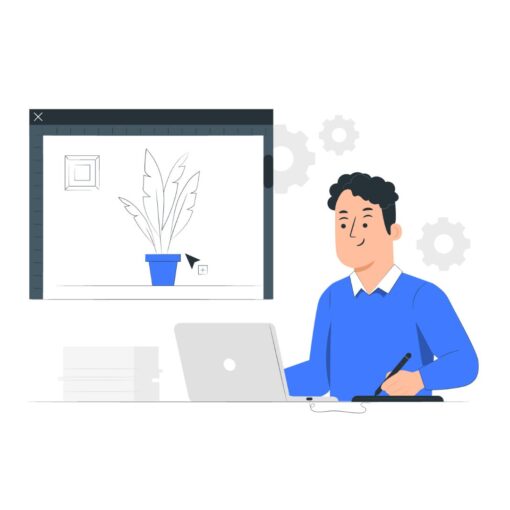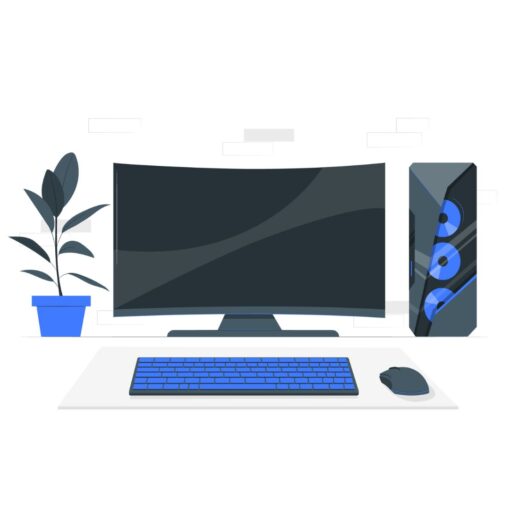If you want your website to get traffic, you have to optimize it for search engines. It doesn’t matter if your site is well-designed, if no one can find you on Google.
1. Create a sitemap
The sitemap is a file that lists all the pages on your website. It’s used by search engines to find and index your content.
If you don’t have a sitemap, you can create one using a tool like Screaming Frog or XML Sitemaps.
Once you’ve created your sitemap, you’ll need to submit it to the major search engines. This will help them find and index your content more quickly.
2. Create a robots.txt file
A robots.txt file tells search engine crawlers which pages or sections of your site they can and can’t crawl.
This can be useful to avoid having your site’s server get overwhelmed by too many requests from crawlers, which can slow down your site or even cause it to crash.
It can also be useful if there are certain pages or sections of your site that you don’t want to show up in search results, such as a thank-you page that people see after they fill out a form on your site.
Here’s an example of what a robots.txt file looks like:
User-agent: *
Disallow: /cgi-bin/
Disallow: /tmp/
Disallow: /junk/
Disallow: /admin/
In this example, the asterisk (*) is a wildcard that means “all bots.” The Disallow: commands tell bots not to crawl the specified directories.
If you want to allow bots to crawl a directory, you can use the Allow: command. And if you want to allow or disallow crawling of specific files, you can list them one per line, like this:
User-agent: *
Disallow: /private/
Allow: /private/file.html
Disallow: /cgi-bin/
Disallow: /tmp/
Disallow: /junk/
Disallow: /admin/
You can create a robots.txt file using a text editor, and then upload it to the root directory of your site. You can also use a robots.txt generator tool to create one for you.
3. Create a 404 error page
A 404 error page is what people see when they try to visit a page on your website that doesn’t exist. This can happen if you delete a page or change the URL of a page without setting up a redirect.
If you don’t have a custom 404 error page, people will see a generic error message from your web host. This isn’t a great experience for your website visitors, and it can also hurt your SEO.
If search engines see that you have a lot of 404 errors on your site, they may think that your site is low-quality and that you don’t care about your users. This can hurt your rankings.
To avoid this, make sure you have a custom 404 error page on your website. On this page, you should let people know that the page they were looking for doesn’t exist, and you should provide links to other pages on your site that they might be interested in.
4. Choose a domain name with your keywords
If you can, you should try to include your main keywords in your domain name. This will help your website rank better in the search engines.
If you already have a domain name and you’re not getting the results you want, you might want to consider buying a new domain name and redirecting your old site to the new one.
5. Use keywords in your title tags
The title tag is an HTML tag that exists in the head section of each webpage. It provides an initial cue or context as to what the topical subject matter is of the respective page it is on.
It is featured when someone shares your page out to their social media accounts or via the search engines’ results pages.
6. Write a meta description for your pages
The meta description is the short paragraph of text that appears below your page’s URL in the search results. It’s a great opportunity to tell people what your website is about and why they should click on your site.
You can create a meta description for every page on your website. But, if you don’t, Google will create one for you based on the content of your page. So, it’s best to write your own meta descriptions and make sure they’re accurate and compelling.
7. Use keywords in your header tags
Header tags are used to break your content up into different sections. The H1 tag is typically used for the title of your content, and you should only have one H1 tag on a page.
The H2 tag is then used for the main headings of your content, and you can have several H2 tags on a page. Finally, the H3 tag is used to break up the content under the H2 headings, and you can have several H3 tags on a page.
It’s important to use your main keywords in your header tags to help search engines understand what your content is about. This is another way to reinforce the relevance of your content to your target keywords.
8. Optimize your images
Images can help your website pages stand out and make them more appealing to your visitors. However, if your images are not optimized, they can make your website slower and hurt your SEO.
To make sure your images are optimized, you need to do the following:
• Use high-quality images: Low-quality images can make your website look unprofessional. Use high-quality images to make a good impression on your visitors. These can be created using AI image prompts.
• Compress your images: Large image files can slow down your website. Before you upload your images to your website, make sure to compress them.
• Use descriptive file names: Use descriptive file names for your images. This will make it easier for search engines to understand what your images are about.
• Use alt text: Alt text is a short description of your image. It helps search engines understand what your images are about and can also improve the accessibility of your website for people with visual impairments.
9. Write quality content
Quality content is the cornerstone of every website. The more you can write about your products and services, the better.
Incorporating relevant topics, such as the importance of Minorities in Tech, can enhance your content and showcase your commitment to diversity.Not only does this help your website rank in search engines, but it also builds trust with your customers.
When writing content for your website, make sure to include keywords and phrases that your potential customers are likely to use when searching for your products and services.
Also, be sure to write in a way that is easy to understand and that is free of spelling and grammar errors. Some AI tools can help you with this.
If you’re not a strong writer, consider hiring a professional to help you. You can also use an AI copywriter to help create captivating copy.
10. Create internal links
Internal links are often overlooked when it comes to SEO, but they can be very important. Internal links are links that go from one page on your website to another page on your website.
Internal linking helps to spread the link juice around your website. This is important because the more link juice a page has, the higher it will rank in the search results.
Internal linking also helps to make it easier for search engines to crawl your website. When you link to other pages on your website, search engines will be able to find those pages and index them.
In addition, internal linking helps to improve the user experience on your website. When you link to other pages on your website, it makes it easier for users to find the information they are looking for.
11. Update your content regularly
Regularly updating the content on your website can help to improve your search engine ranking.
Why? Because search engines like Google love fresh and relevant content.
If your website is filled with old, outdated content, then it’s going to be much harder for you to rank well in the search engine results pages.
Make sure that you update your content regularly and that you add new, fresh content to your website on a regular basis.
This will help to improve your search engine ranking and it will help to keep your website visitors engaged and coming back for more.
Conclusion
SEO is an ongoing process. As you keep improving your website, you’ll see your rankings rise. This can help you attract more traffic and leads.




